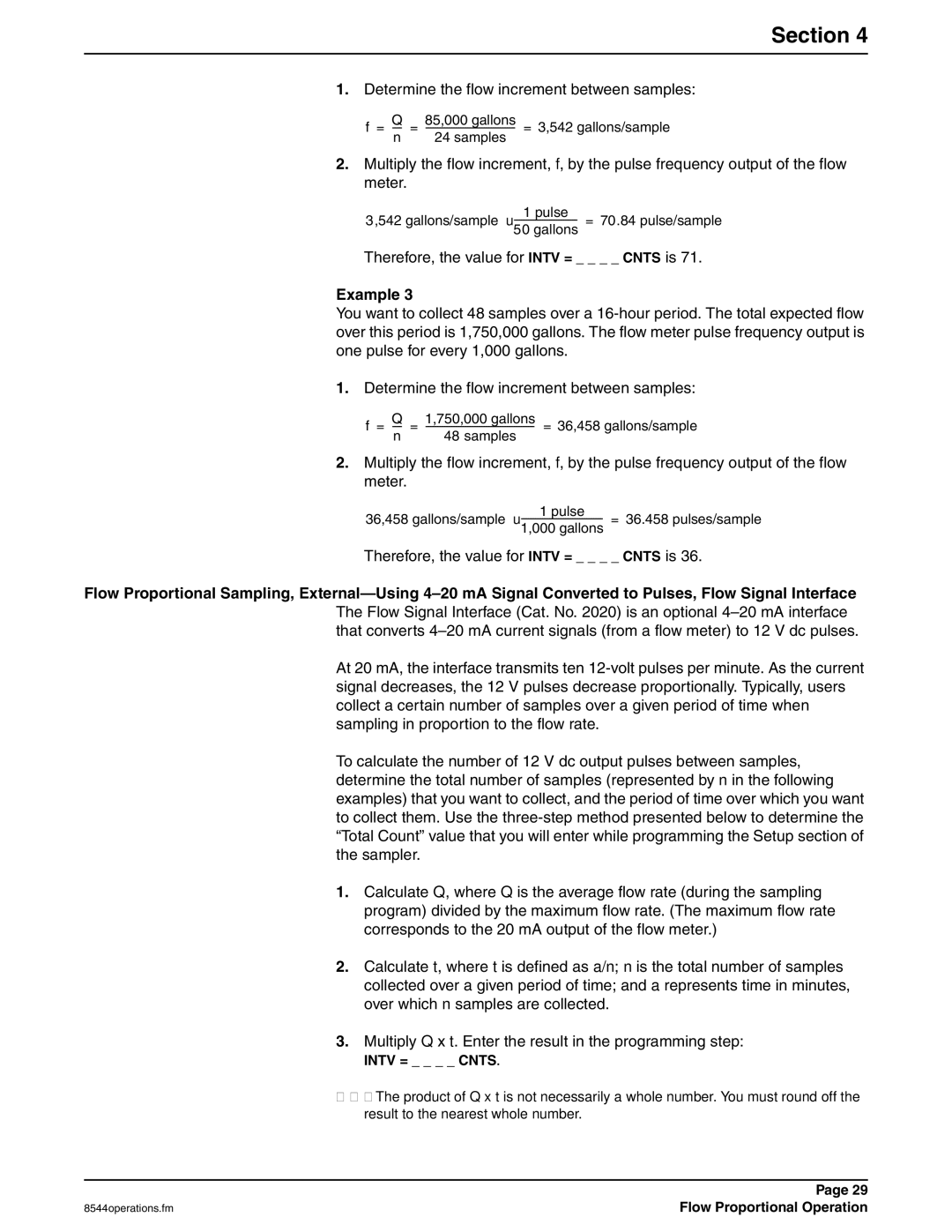
Section 4
1.Determine the flow increment between samples:
Q 85,000 gallons
f =
n 24 samples
2. Multiply the flow increment, f, by the pulse frequency output of the flow meter.
3,542 gallons/sample × | = 70.84 pulse/sample | |
| 50 gallons |
|
Therefore, the value for INTV = _ _ _ _ CNTS is 71.
Example 3
You want to collect 48 samples over a
1.Determine the flow increment between samples:
Q 1,750,000 gallons
f =
n 48 samples
2. Multiply the flow increment, f, by the pulse frequency output of the flow meter.
36,458 gallons/sample × | 1 pulse | = 36.458 pulses/sample |
Therefore, the value for INTV = _ _ _ _ CNTS is 36.
Flow Proportional Sampling,
At 20 mA, the interface transmits ten
To calculate the number of 12 V dc output pulses between samples, determine the total number of samples (represented by n in the following examples) that you want to collect, and the period of time over which you want to collect them. Use the
1.Calculate Q, where Q is the average flow rate (during the sampling program) divided by the maximum flow rate. (The maximum flow rate corresponds to the 20 mA output of the flow meter.)
2.Calculate t, where t is defined as a/n; n is the total number of samples collected over a given period of time; and a represents time in minutes, over which n samples are collected.
3.Multiply Q x t. Enter the result in the programming step:
INTV = _ _ _ _ CNTS.
Note: The product of Q x t is not necessarily a whole number. You must round off the result to the nearest whole number.
| Page 29 |
8544operations.fm | Flow Proportional Operation |
